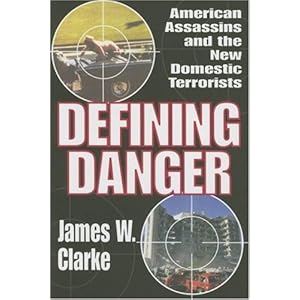America's History of Crazy Political Assassins Didn't Begin with Loughner

Over a long academic career, I have researched and written about twenty-one American assassins, would-be assassins, and domestic terrorists. It is pure nonsense to suggest, as some have, that the political environment has nothing to do with the actions of very disturbed individuals—as the Tucson shooter, Jared L. Loughner appears to be—who plan and attack political figures in public venues. I’ve identified four types of perpetrators in these troubling events. They range from rational political extremists, like Robert Kennedy’s assassin, Sirhan Sirhan, through two types of emotional disturbance that differ only in degree, to those who are clearly psychotic, like Theodore Roosevelt’s would-be assassin, John Shrank. Loughner’s actions fit the emotionally disturbed pattern that includes President Reagan’s attacker, John W. Hinckley, Jr., and Arthur Bremer, presidential candidate George Wallace’s would-be assassin.
There are many similarities, but let me mention the most significant. Both Hinckley and Bremer considered the option of mass murder before selecting their political victims—Hinckley on the Yale campus; Bremer at a busy Milwaukee intersection. Then both shifted their attention to well-known political figures. Hinckley, after stalking President Jimmy Carter, selected his more popular successor, Ronald Reagan. Bremer, after stalking President Nixon unsuccessfully, shifted his attention to Nixon’s challengers in the 1972 election, George Wallace and George McGovern. Bremer chose Wallace only because he was polling better than McGovern. It was their victims’ political popularity that made them attractive targets. What motivates this type of would-be assassin is the notoriety that comes with either killing a great number of ordinary people, or a prominent individual. Loughner went for both.
The connection between cultural influences and heinous acts can be clearly identified in the case of Bremer and his link to the film, Taxi Driver, featuring Robert DeNiro as Travis Bickle, the eerie cab driver/assassin/mass murderer. In developing the Bickle character, Paul Schrader’s screen play shows the influence of Arthur Bremer’s own An Assassin’s Diary—a record of the musings of a troubled young man intent on violence. Art then influenced the life of John Hinckley, who saw the film multiple times and fell under its spell to the extent that, in dress and behavior, he began to take on the attributes of the Bickle character. Hinckley’s well-known romantic interest in the actress Jodie Fosterbegan with his infatuation with Iris, the teenage prostitute Foster played in the film.One cannot say whether the final bloody scenes in the film, as Bickle rescues Iris from her pimp, were contemplated by Hinckley as he considered mass murder at Yale and, ultimately, as he opened fire on President Reagan and others on March 30, 1981. But the influence on his general mentality is undeniable.
For Hinckley, Bremer, and—until the evidence is in, I’m willing to bet—Jared Loughner, their victims become trophies in a suicidal quest for lead-story notoriety. In Tucson, Giffords was Loughner’s primary target, the first to be shot. As Giffords recognized and acknowledged, she had been targeted in a particularly toxic reelection campaign. For example, in addition to being placed in Sarah Palin’s “cross hairs,” her Tea Party-backed opponent ran the following invitation on his campaign website:
Get on Target for Victory in November. Help remove Gabrielle Giffords from office. Shoot a fully automatic M16 with Jesse Kelly.
It is easy to see how the threats and rancor of that time could have provided a facilitating context for an angry, depressed person to act out. Someone like the shooters at Columbine and Virginia Tech, or Jared Loughner, troubled young men intent on violence, who had easy access to exceedingly deadly weapons.